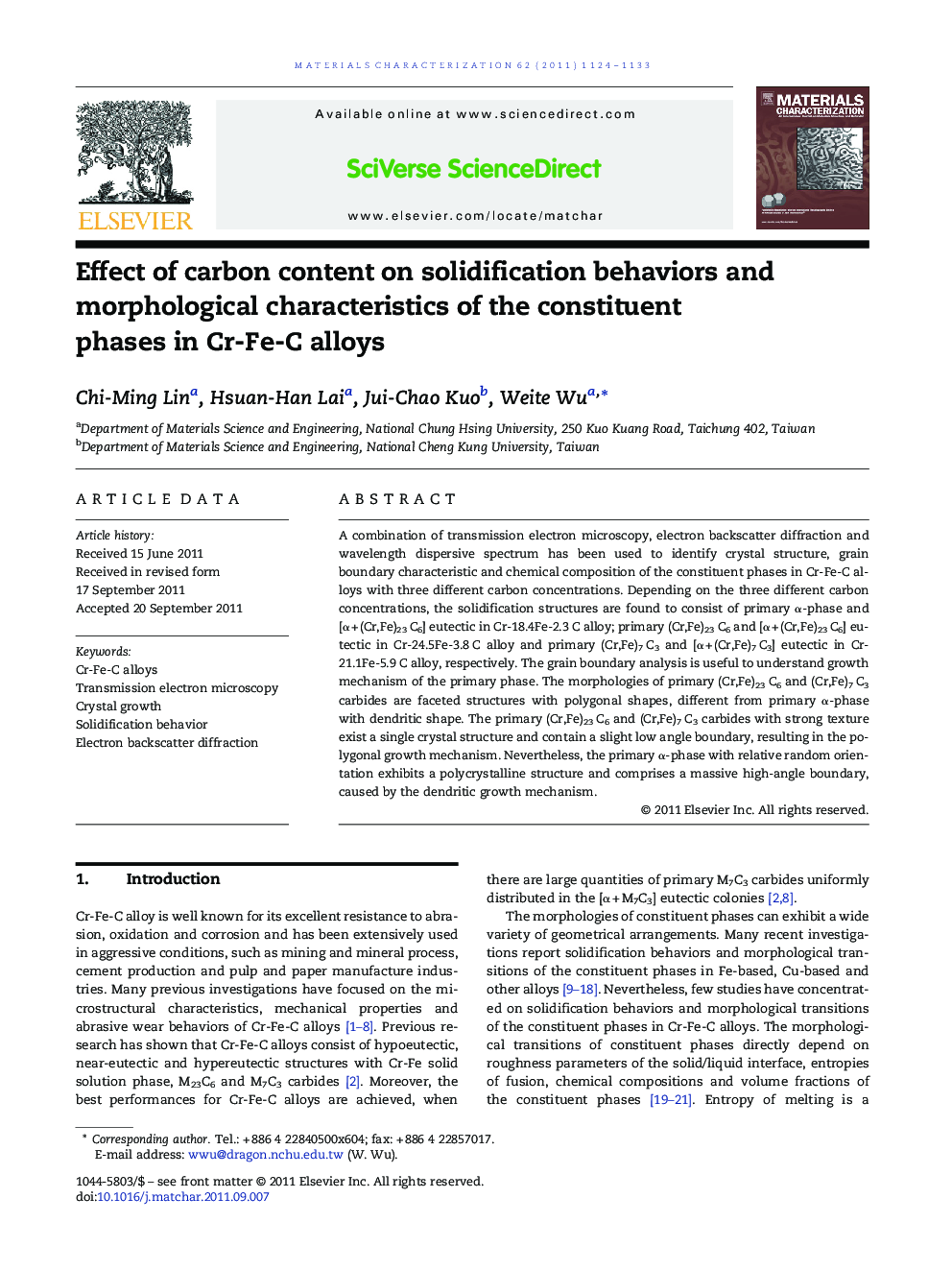| Article ID | Journal | Published Year | Pages | File Type |
|---|---|---|---|---|
| 1571503 | Materials Characterization | 2011 | 10 Pages |
A combination of transmission electron microscopy, electron backscatter diffraction and wavelength dispersive spectrum has been used to identify crystal structure, grain boundary characteristic and chemical composition of the constituent phases in Cr-Fe-C alloys with three different carbon concentrations. Depending on the three different carbon concentrations, the solidification structures are found to consist of primary α-phase and [α + (Cr,Fe)23 C6] eutectic in Cr-18.4Fe-2.3 C alloy; primary (Cr,Fe)23 C6 and [α + (Cr,Fe)23 C6] eutectic in Cr-24.5Fe-3.8 C alloy and primary (Cr,Fe)7 C3 and [α + (Cr,Fe)7 C3] eutectic in Cr-21.1Fe-5.9 C alloy, respectively. The grain boundary analysis is useful to understand growth mechanism of the primary phase. The morphologies of primary (Cr,Fe)23 C6 and (Cr,Fe)7 C3 carbides are faceted structures with polygonal shapes, different from primary α-phase with dendritic shape. The primary (Cr,Fe)23 C6 and (Cr,Fe)7 C3 carbides with strong texture exist a single crystal structure and contain a slight low angle boundary, resulting in the polygonal growth mechanism. Nevertheless, the primary α-phase with relative random orientation exhibits a polycrystalline structure and comprises a massive high-angle boundary, caused by the dendritic growth mechanism.
► Microstructures of the as-clad Cr-based alloys are characterized by TEM. ► EBSD technique has been use to characterize the grain boundary of primary phases. ► We examine transitions in morphology about the primary phases. ► Morphologies of primary carbides are polygonal different from primary α-phase. ► Solidification structures rely on C concentrations in Cr-Fe-C alloy.
